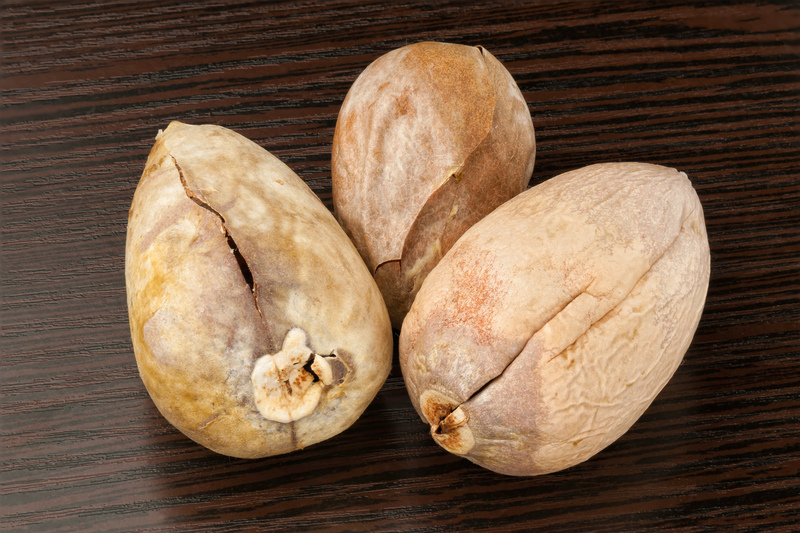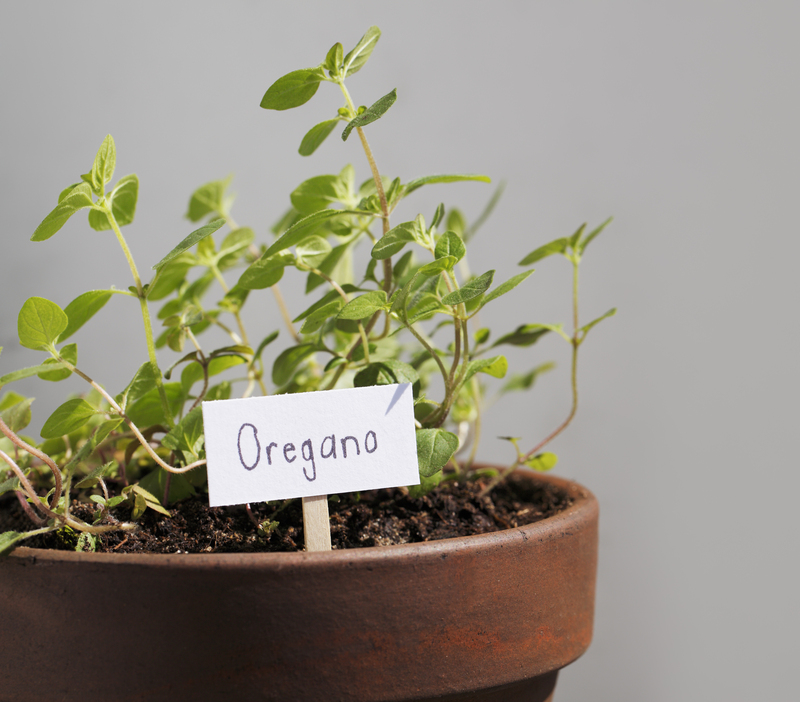Elevate Your Orchid Care Regimen
Posted on 31/08/2025
Elevate Your Orchid Care Regimen: Expert Solutions for Healthy, Blooming Orchids
Orchids are among the most exquisite and beloved houseplants worldwide, admired for their stunning blooms and remarkable diversity. However, to consistently witness their vibrant flowers, enthusiasts must commit to proper orchid care. Whether you're a beginner or have some experience, there's always room to elevate your orchid care regimen and achieve healthier, longer-lasting specimens. In this guide, discover essential tips, advanced techniques, and common pitfalls to dodge as you journey toward orchid mastery.

Understanding Your Orchid: Types and Unique Needs
Before diving deep into the secrets of expert orchid care, it's crucial to understand your plant. Orchids come in over 25,000 species, but a few types dominate home collections:
- Phalaenopsis (Moth Orchid): Known for their resilience and beautiful, long-lasting blooms.
- Dendrobium: Offer an array of forms and require specific light conditions.
- Cattleya: Famous for their vivid colors and fragrant flowers.
- Oncidium (Dancing Lady): Highly popular for their distinctive sprays of yellow blooms.
Each variety has unique requirements. Identifying your orchid type is the foundational step to elevating your orchid care regimen.
Quick Identification Checklist
- Leaf shape and thickness - Thicker leaves often indicate drought tolerance.
- Pseudobulbs - Some orchids store water in these bulbous stems, affecting watering needs.
- Flower structure and color - Each genus boasts a signature bloom structure.
Optimizing Orchid Light Exposure
Getting the right amount and type of light is paramount. Orchids, in their natural habitat, grow under forest canopies. This means:
- Bright, indirect sunlight is key - direct sun can scorch leaves, while too little light stifles blooming.
- Phalaenopsis and Paphiopedilum thrive in lower light, while Cattleyas and Vandas require more brightness.
To elevate your orchid care routine, consider using sheer curtains or positioning plants near east-facing windows. For enthusiasts in lower-light homes, LED grow lights with adjustable spectrums are excellent tools to ensure year-round flowering.
Signs of Light Stress in Orchids
- Yellowing leaves: Too much light exposure.
- Dark green, floppy leaves: Not enough light.
- Lack of blooms: Chronic underexposure.
Maintain a consistent light source and regularly rotate your orchid for balanced growth.
Precise Watering: A Cornerstone of Elevated Orchid Care
Overwatering is the most common mistake among enthusiasts. To enhance your orchid care regimen and promote vigorous blooms:
- Water only when the growing medium is nearly dry - not on a fixed schedule.
- Use tepid, distilled, or rainwater to avoid mineral buildup.
- Water in the morning; this allows foliage to dry and reduces fungal risk.
- Let excess water drain - never let orchids sit in standing water.
The proper watering technique often involves moving the entire pot to a sink, gently soaking the medium until water runs free from the bottom, then letting it drain thoroughly.
Tip: Check root color
- Silvery-white roots: Plant is ready for water.
- Bright green roots: Still moist; wait before watering.
Refining your watering schedule is one of the best ways to improve your overall orchid care routine.
The Right Humidity and Temperature for Orchids
Orchids are particularly sensitive to humidity fluctuations. Most thrive at 50-70% humidity, which is higher than the typical household. To elevate your orchid care regimen in terms of environment:
- Group orchids together to boost the immediate humidity.
- Use a humidity tray (a shallow tray filled with water and pebbles).
- Mist leaves in the morning to mimic natural conditions.
- If needed, employ a small room humidifier for consistency.
Regarding temperature, most hybrid orchids perform best between 65-80?F (18-27?C) by day and a slight drop at night. Research your orchid's native habitat for optimal conditions.
Monitoring Microclimates
Place a digital thermometer and hygrometer near your orchids to keep tabs on ambient conditions.
Upgrading Your Orchid Potting Medium and Repotting Techniques
A critical way to elevate orchid care is by choosing the right potting medium and staying ahead of repotting needs. Orchids do not thrive in regular soil; they need air flow around their roots and fast drainage.
- Bark-based mixes - Great for most epiphytic orchids.
- Sphagnum moss - Holds more moisture, suitable for sensitive varieties or arid environments.
- Charcoal, perlite, and coconut husk chips are often added for improved drainage and aeration.
Repot your orchid every 1-2 years, or if the medium starts to break down, retain water, or roots outgrow the pot.
Repotting Best Practices
- Remove old medium and trim away dead roots.
- Always use sterile tools to prevent disease.
- Gently situate the orchid in a slightly larger pot with fresh medium.
Fertilizing for Exuberant Orchid Blooms
To upgrade your orchid care regimen, fertilization can't be ignored. Orchids, unlike other houseplants, need a light but consistent feeding schedule:
- Use a balanced, water-soluble orchid fertilizer (20-20-20 or similar ratio).
- Fertilize half-strength every 2-3 weeks while actively growing, less when dormant.
- Flush the potting medium with plain water once a month to prevent salt buildup.
- Never fertilize a completely dry plant--always water first.
This gentle, steady nourishment helps support root development and encourages show-stopping blossoms.
Orchid Pruning and Grooming: Keeping Plants Clean and Healthy
Regular pruning and grooming are pivotal for plant health and should be part of every optimal orchid care routine:
- Remove spent blooms promptly to redirect energy to new growth.
- Trim off any yellowing leaves or dead roots with sterile shears.
- Wipe leaves with a damp, soft cloth to prevent pests and keep pores unclogged.
After blooms fade, don't rush to prune the flower spike (especially with Phalaenopsis); sometimes a secondary spike will appear for an encore display!
Pest and Disease Management: Proactive Orchid Wellness
Elevating your orchid care is impossible without vigilance against common orchid pests and diseases:
- Aphids, mealybugs, and spider mites may appear on leaves and stems.
- Fungal and bacterial spots can develop in persistently damp conditions.
To keep your orchids healthy:
- Routinely inspect both sides of leaves and roots.
- Quarantine any new or ailing plants to prevent spread.
- Wipe pests away with isopropyl alcohol or use insecticidal soap for infestations.
- Ensure good ventilation and avoid overcrowding plants.
Ultra-efficient orchid care means being one step ahead of threats!
Encouraging Orchids to Re-bloom: Advanced Techniques
Nothing is more rewarding than witnessing your orchid flower again. To boost your orchid care regimen and trigger re-blooming:
- Provide a slight temperature drop (about 10?F/5?C at night) in autumn to stimulate flowering in many species.
- Maintain a strict light-dark cycle (12-14 hours of light per day, plus rest period).
- Avoid overfeeding nitrogen during flower spike formation; switch to a blossom-boosting formula if needed.
- Be patient--some species only bloom once per year!
These nuanced adjustments will transform your orchid care regimen from routine maintenance to high-level horticulture.
Special Tips for Advanced Orchid Enthusiasts
- Try water culture: Some growers experiment with semi-hydroponics or full water culture for certain hybrids.
- Breed your own orchids by hand-pollinating--unlocking unique flower combinations over time.
- Join local orchid societies or online forums to swap insights, divisions, and troubleshoot with like-minded plant lovers.
- Label each plant with care dates, bloom history, and watering needs for targeted care.
Your passion and willingness to try new things will only further elevate your orchid care regimen.

Common Orchid Care Mistakes and How to Avoid Them
Even seasoned growers stumble; here's how to sidestep frequent errors:
- Overwatering--wait for roots to look silvery before watering again.
- Neglecting air flow--place fans nearby for fresher, healthier leaves.
- Using tap water--opt for filtered, distilled, or rainwater when possible.
- Repotting too infrequently--old medium can suffocate roots and attract rot.
- Forgetting to fertilize--orchids need regular but dilute nutrition to thrive.
Conclusion: Your Path to Elevated Orchid Care Success
With the right techniques and consistent attention, you can elevate your orchid care regimen to new heights. By understanding your orchid's needs, fine-tuning environmental factors, ensuring proper watering and feeding, and staying alert to threats, you'll transform your home into a lush oasis of vibrant, healthy, and frequently blooming orchids.
Embrace experimentation and document what works best. With time and patience, your orchid care journey will become a deeply rewarding part of your daily life, yielding spectacular floral displays year after year. Happy growing!
Frequently Asked Questions | Elevate Your Orchid Care Regimen
- How often should I water my orchid?
Water when the medium is nearly dry--typically every 5-10 days, depending on conditions. - Why are my orchid leaves wrinkling?
Usually a sign of underwatering or root problems. - Can orchids grow in regular potting soil?
No, always use a specialty orchid mix to allow proper aeration and drainage. - What's the best fertilizer for orchids?
Balanced, water-soluble orchid fertilizer, used half-strength during the growing season.
For more orchid care resources, subscribe to our newsletter and take your orchid care experience to the next level!

